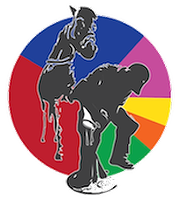Major Pet Peeves that Farriers Have with Footcare Clients
| Concerns | % of Farriers |
|---|---|
|
Inappropriate work area (unsafe, poor environment, poor lighting, unlevel ground) |
84% |
|
Horses that compromise farrier work and safety (spoiled, misbehaving, poorly trained, undisciplined, not trained to trim/shoe) |
76% |
|
Payment (not paying on time, not paying at time of service, chasing money, post-dating checks, asking to wait to deposit checks) |
63% |
|
Dirty horses or hooves (wet, muddy, unhealthy environment, dirty stalls) |
59% |
|
Don’t follow farrier’s directions (failure to comply, don’t listen, don’t follow treatment guidelines) |
45% |
| Horses not ready for farrier (in pasture) | 40% |
| Inappropriate frequency of scheduling trimming and shoeing intervals | 39% |
| Misinformed (internet-educated, reads too much, or misunderstands, out-of-date information) | 35% |
|
Lack of footcare (don’t pick up feet/hooves, don’t clean hooves, poor foot hygiene, thrush, stone bruises, disregard for horse’s health and feet) |
32% |
| Telling farrier how to shoe (know-it-all, offer advice) | 30% |
| Lack of hoof-care knowledge (no horse sense, lack of education, limited information) | 28% |
| Forget, miss, don’t show up for appointments | 26% |
|
Cost complaints (cost-driven decision-making, price bargaining, not wanting to pay fair price, whining about costs) |
25% |
— Survey of attendees at 2007 International Hoof-Care Summit
Steel Still Dominates Shoe Choice
Among full-time farriers, steel shoes make up 76% of all of the shoes they use. This is followed by 11% for aluminum shoes.
Hand-forged shoes make up 7% of the total, followed by 4% for glue-on shoes and 2% for plastic, synthetic or other types of non-metal shoes.
— 2018 American Farriers Journal Farrier Benchmark Study
Friday's Farrier Facts & Figures is brought to you by Markel Insurance. 
Markel Corporation (NYSE – MKL) is a holding company for insurance, reinsurance, and investment operations around the world. Headquartered in Richmond, Virginia and founded in 1930, Markel reports its ongoing underwriting operations in three segments, and products originate from four insurance divisions and one reinsurance division. Markel Ventures, a subsidiary that makes strategic investments in companies outside of the insurance marketplace, is another important component of our business.
In each of our businesses, we seek to deliver innovative products and responsive customer service so that we can be a market leader. Our time horizon is long-term, our underwriting approach is disciplined, and our focus is on continuously improving the quality of the customer experience. Our financial goals are to earn consistent underwriting and operating profits and to combine those profits with superior investment returns to build shareholder value.








Post a comment
Report Abusive Comment